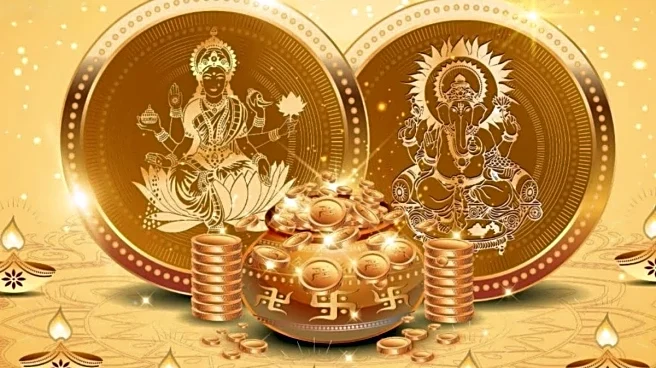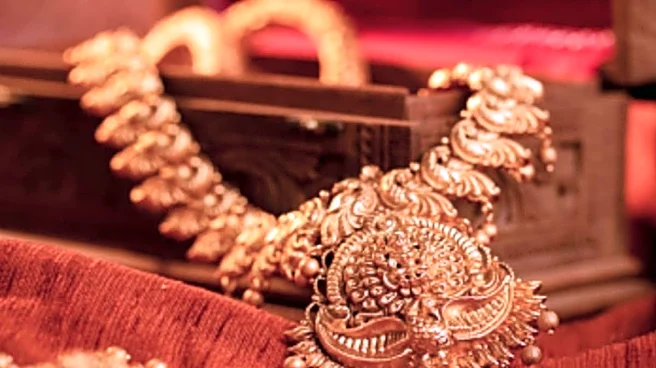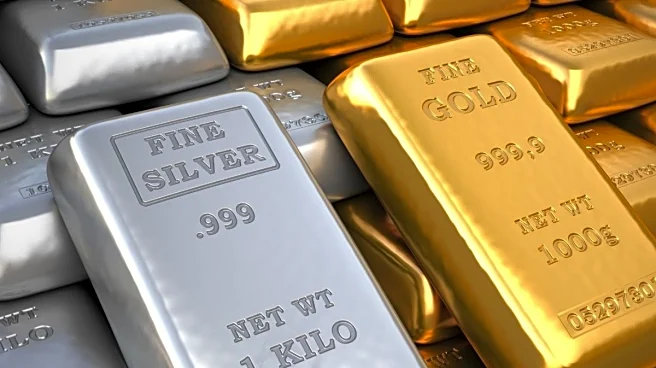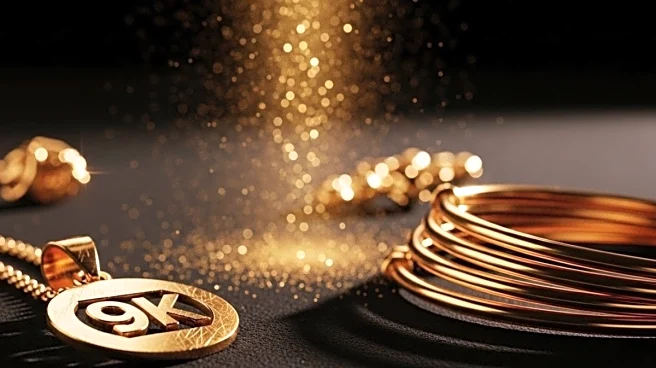Dhanteras Gold Price 2025: As the country gears up for Dhanteras 2025, gold has already given investors more reasons to celebrate. Gold prices have soared over 50% in 2025 alone, surpassing all expectations,
and are showing little sign of slowing. At over Rs 1,30,000 per 10 grams, gold in India now trades at an all-time high, supported by a combination of global and domestic factors, including safe-haven demand, central bank buying, rupee depreciation, and hopes of further interest rate cuts by the US Federal Reserve.
In India, festivals often carry deep economic and emotional meaning, and Dhanteras remains the most auspicious occasion for buying gold. Every year, jewellery stores witness massive crowds as consumers, guided by faith and financial prudence, add to their gold holdings. For most Indians, gold isn’t just a commodity; it’s a long-term store of value and a hedge against uncertainty. This cultural approach has helped Indian households accumulate the huge private gold reserves, estimated at nearly $3 trillion.
“Since last Dhanteras, gold has delivered a remarkable return of nearly 60%, significantly outperforming the Nifty 50,” brokerage firm Axis Direct said in its latest note. The surge has been driven by lower interest rates, persistent geopolitical tensions, strong central bank purchases, and economic anxiety over tariffs and global growth.
Currently, in Mumbai, the price of 24-carat gold stood at Rs 1,32,700 per 10 grams, while 22k gold was available at Rs 1,21,700 per 10 grams.
Lower rates make non-yielding assets like gold more attractive, boosting demand from investors seeking refuge amid currency weakness and inflation concerns.
What Could Drive Gold Prices Next
According to Axis Direct, several structural and macroeconomic trends will shape gold’s trajectory over the next year. A key factor is the risk of hyperinflation stemming from excessive money printing by major central banks, particularly the US Federal Reserve, to manage rising debt obligations. Such policies tend to weaken the dollar and drive investors toward tangible assets like gold.
Another powerful force is the de-dollarisation trend, as many central banks diversify their reserves away from the US dollar. “If this trend accelerates in 2026, gold is likely to continue reaching new highs,” Axis Direct noted.
The report also pointed to rising ETF inflows, which have been pushing prices to record levels. As long as institutional interest remains strong, the yellow metal could stay on an upward trajectory. Central banks, too, continue to buy aggressively. After adding more than 1,180 tonnes to their reserves last year, they are expected to purchase around 1,000 tonnes in 2025 despite high prices, providing a steady floor for the market.
Meanwhile, global uncertainty, ranging from volatile trade policies to political instability, continues to underpin demand. “President Trump’s unpredictable tariff policies have already spooked markets, which has benefited precious metals. With more rate cuts and geopolitical tensions on the horizon, gold prices are likely to remain elevated into next year,” Axis Direct said.
The Outlook
Axis Direct expects the bullish scenario for gold to play out if the metal sustains above $3,800 per ounce, potentially moving toward $4,700-$4,800 in the medium term. However, a pullback below $3,446 could test the $3,100 support zone, a level that will determine whether the current uptrend continues.
For domestic investors, the brokerage suggests an accumulation strategy. “Traders may consider buying on dips in the range of Rs 1,05,000 to Rs 1,15,000, with a potential upside target of Rs 1,45,000-1,50,000 by next Diwali,” it said.
Shifting Trends in Jewellery Demand
While gold prices touch record highs, India’s festive sparkle extends beyond bullion. Eshwar Surana, managing director of Raj Diamonds, said the festive season remains an emotional and symbolic time for buyers. “The festive season has always been considered an auspicious time to buy jewellery, perfectly blending emotional significance with timeless luxury,” he said.
Surana noted that natural diamond jewellery is gaining traction, especially among younger consumers.
“Rising disposable incomes, the growing influence of Gen Z and millennials, and a preference for meaningful investments are driving this demand,” he said.
With gold prices soaring, many buyers are shifting toward diamond-studded pieces crafted with less gold content. The bridal market, once dominated by traditional gold sets, is witnessing a steady transition toward diamond designs that combine modern aesthetics with cultural sentiment. Even men’s jewellery, including collar cuffs, brooches, and zipper necklaces, is gaining popularity.
Surana expects diamond jewellery to become a mainstream choice not just for weddings but also for everyday wear, as lightweight and lifestyle-oriented designs resonate with modern buyers.


/images/ppid_59c68470-image-17606325378639995.webp)

/images/ppid_59c68470-image-176064004928936649.webp)

/images/ppid_59c68470-image-176051755879434661.webp)

/images/ppid_59c68470-image-176061253578718727.webp)



